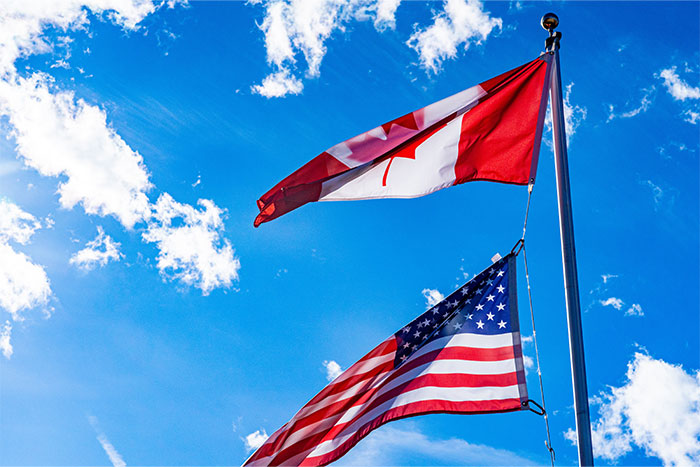The United States and Canada, both popular destinations for immigrants, have distinct immigration policies and pathways. This article provides a comparative analysis of the immigration policies of both countries and the different options available to immigrants.
Immigration Policies: Canada vs. the United States
Canada and the United States have different approaches to immigration. Each year, Canada releases an Immigration Levels Plan that acts as a guideline for the number of immigrants to be welcomed into the country. The plan includes a breakdown of immigrants in the economic, family, and humanitarian class programs over the next three years. In its Immigration Levels Plan 2023-2025, Canada announced that it will be increasing its immigration targets and plans to welcome 460,000 in 2023, 485,000 in 2024, and 500,000 in 2025.
On the other hand, the United States, which admitted over 1,100,000 lawful permanent residents (LPR’s) in 2016, has seen a significant decline in the number of LPR’s admitted in recent years due to government policies, processing delays, and the COVID-19 pandemic. The Immigration and Nationality Act (INA) governs the US immigration policy, allowing the US to grant up to 675,000 permanent immigrant visas each year across various visa categories.
Pathways to Permanent Residency
Both countries offer several pathways to permanent residency. In the United States, these include employer-sponsored green card applications, self-sponsored employment-based green card applications, marriage to a US citizen, sponsorship by a close relative who is a US citizen or permanent resident, and the US Department of State diversity lottery program.
In Canada, popular ways for skilled immigrants to gain permanent residency include Express Entry, Provincial Nominee Programs, and Sponsorship. Express Entry is the main application management system used by the Canadian government to provide permanent residence to skilled workers. Provincial Nominee Programs are operated by almost every province and territory, allowing them to nominate individuals who wish to immigrate to Canada and are interested in settling in a particular province.
Looking Ahead
Both countries are continually evolving their immigration policies. The United States has seen ongoing changes to several key immigration policies reflecting actions by the US government and court rulings. Meanwhile, Canada is increasing its immigration targets over the next few years, aiming to welcome 500,000 newcomers by 2025. The provinces will also receive more authority in nominating immigrants through the Provincial Nominee Program, with targets set to increase.
In conclusion, while both countries offer various pathways to immigration, the specifics of the process, the number of immigrants accepted, and the focus of immigration policies differ significantly.






